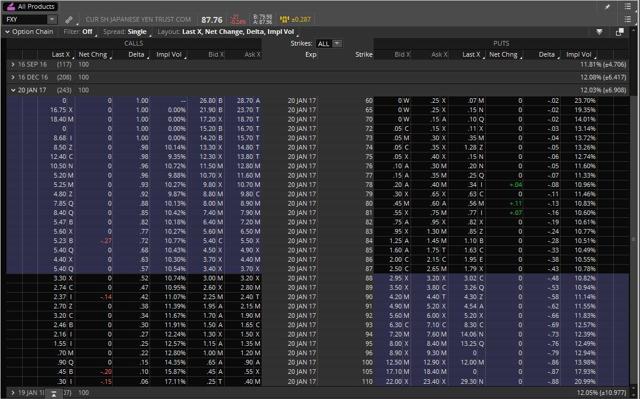As we warned previously, the devaluation, or breaking of the Saudi Riyal peg to the dollar, could be the black swan event for crude oil and the recent weakness in SAR forwards - while not as violent as Nigeria's Naira - certainly signals a renewed market fear that breaking the peg is imminent. It appears Saudi officials are none too pleased with the free markets speculating on this devaluation and as Bloomberg reports, banks in Saudi Arabia are coming under fresh pressure over products that allow speculators to bet against the kingdom’s currency peg, according to people with knowledge of the matter, which were supposedly banned in January.
- *SAUDI ARABIA SAID TO SEEK DETAILS ON BANKS' FORWARD CONTRACTS
- *SAUDI ARABIA SAID TO PROBE BANK CURRENCY TRADES AS PEG STRAINS
- *SAUDI ARABIAN MONETARY AGENCY SAID TO WARN BANKS ON PRODUCTS
SAR Forwards signal a renewed interest in betting on a devaluation...
As Bloomberg reports, The Saudi Arabia Monetary Agency has asked lenders to explain why they are offering dollar-riyal forward structured products to customers less than four months after the regulator banned options contracts that let speculators place wagers on a currency devaluation, the people said. The authority, known as SAMA, didn’t reply to requests for comment.
There has been renewed speculation that the world’s biggest oil exporter won’t be able to maintain the riyal’s peg to the dollar as revenue plunges and the kingdom weighs paying government contractors with IOUs. Riyal forwards for the next 12 months rose to 590 points, the highest since Feb. 19, according to data compiled by Bloomberg, signifying increased speculation of a devaluation.SAMA is asking banks to explain the rationale and relevance of the structured products for the economy and explain why they’ve entered into the products without informing the central bank, according to the people. It also wants transaction details of the derivatives since Jan. 18.It’s also seeking to understand the impact of the products on Saudi banks’ U.S. dollar buy positions from the central bank as well as the risks to customers and banks, they said. The central bank warned any future structured derivative product should be submitted to SAMA for review and approval before they’re launched.
As The Telegraph's Ambrose Evans-Pritchard recently wrote, Saudi Arabia faces a vicious liquidity squeeze as capital continues to leak out the country, with a sharp contraction of the money supply and mounting stress in the banking system.
Three-month interbank offered rates in Riyadh have suddenly begun to spiral upwards, reaching the highest since the Lehman crisis in 2008.Reports that the Saudi government is to pay contractors with tradable IOUs show how acute the situation is becoming. The debt-crippled bin Laden group is laying off 50,000 construction workers as austerity bites in earnest.Societe Generale’s currency team has advised clients to short the Saudi riyal, betting that the country will be forced to ditch its long-standing dollar peg, a move that could set off a cut-throat battle for global share in the oil markets.Francisco Blanch, from Bank of America, said a rupture of the peg is this year’s number one “black swan event” and would cause oil prices to collapse to $25 a barrel. Saudi Arabia’s foreign reserves are still falling by $10bn (£6.9bn) a month, despite a switch to bond sales and syndicated loans to help plug the huge budget deficit.The country’s remaining reserves of $582bn are in theory ample – if they are really liquid – but that is not the immediate issue. The problem for the Saudi central bank (SAMA) is that reserve depletion automatically tightens monetary policy.Bank deposits are contracting. So is the M2 money supply. Domestic bond sales do not help because they crowd out Saudi Arabia’s wafer-thin capital markets and squeeze liquidity. Riyadh now plans a global bond issue....Eventually the next cyclical oil spike will come to the rescue. The question is whether the Saudis can batten down the hatches and make it through the financial storm in a very leaky ship.
As for what happens if (or perhaps "when" is now the more appropriate term) the peg does fall, we close with the following bit from BofAML, who calls the breaking of the riyal peg the "number one black swan event for the global oil market in 2016":
http://www.zerohedge.com/news/2016-05-26/saudi-officials-crackdown-fx-market-currency-peg-starts-strainFor oil, however, the most crucial point is what happens to Middle East currencies and in particular to the Saudi Riyal. In fact, Saudi Arabia’s FX reserves are still high and point to an ample buffer for now, but they have been falling at a relatively fast rate (Chart 21). However, should China allow for significantly faster FX depreciation than is currently priced in by markets, we believe oil prices could fall further. Naturally, the FX reserve drain on Saudi could accelerate to $18bn per month if Brent crude oil prices average $30/bbl (Chart 22), sharply reducing the Kingdom’s ability to retain its currency peg.However, if Saudi cannot resist the gravitational forces created by a persistently strong USD and depegs the SAR to follow Russia or Brazil, oil prices could collapse to $25/bbl. Weaker commodity prices would in turn add more downward pressure on EMs (Chart 26). Thus, even if micro supply and demand dynamics are improving, the path for oil prices in 2016 will heavily depend on how the USD moves against the CNY and the SAR. Or on a Saudi supply cut.










